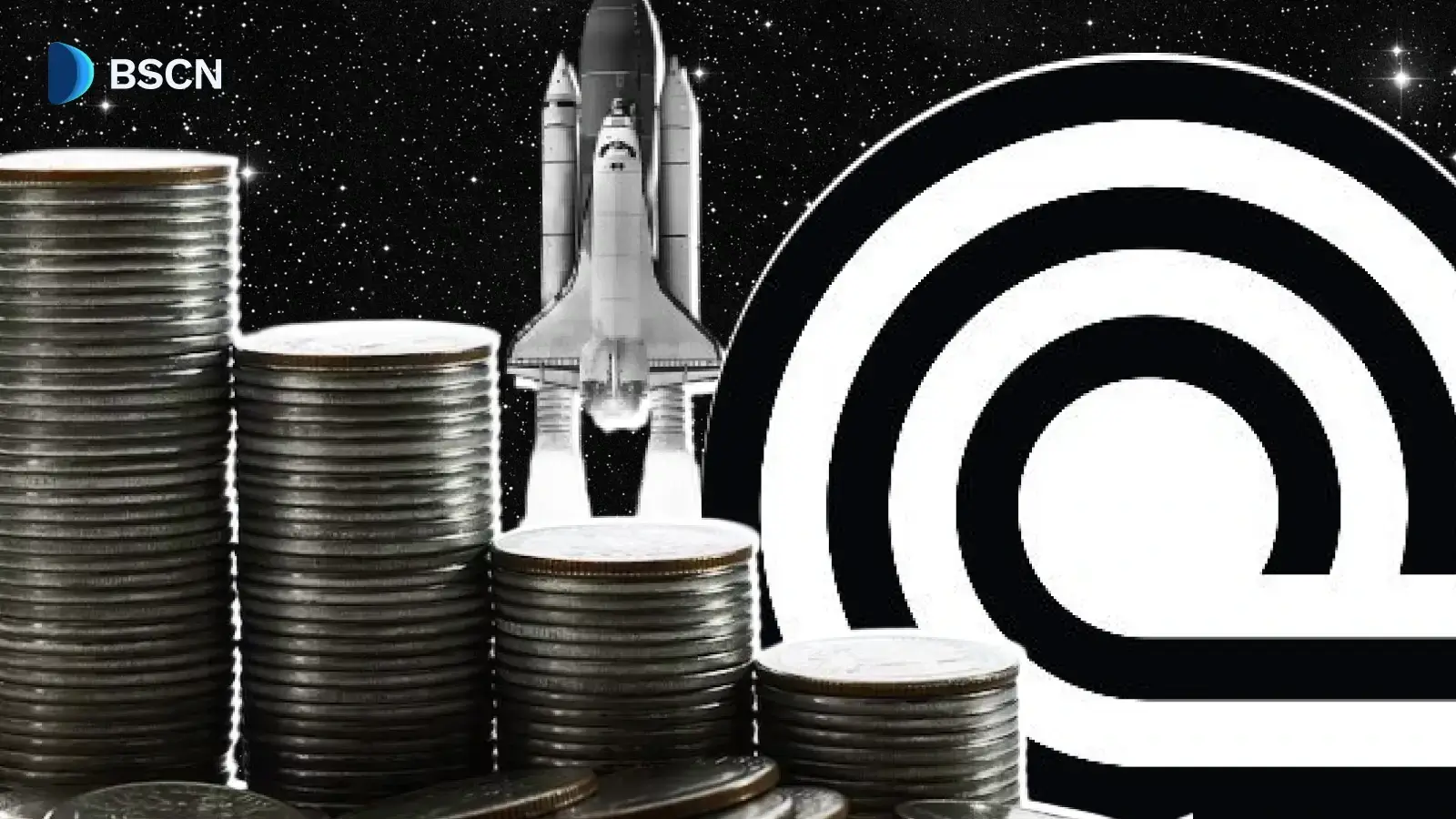News
(Advertisement)
DOGE ETF Launch in the US: What You Need to Know

The first US Dogecoin ETF, DOJE, launches under the Investment Company Act of 1940, holding an asset with no inherent utility.
Soumen Datta
September 10, 2025
(Advertisement)
Table of Contents
The United States is set to see its first memecoin exchange-traded fund (ETF) when the Rex-Osprey Doge ETF (DOJE) launches on 11 September, according to Bloomberg senior analyst Eric Balchunas. This ETF will hold Dogecoin (DOGE), a memecoin originally created without utility or intrinsic purpose, marking the first time a U.S.-listed ETF will trade such an asset.
The ETF is structured as a mutual fund under the Investment Company Act of 1940 rather than the Securities Act of 1933. This allows the fund to begin trading immediately, though it imposes marketing constraints and governance requirements distinct from conventional commodity-style ETFs like those tracking Bitcoin or Ether.
What is the DOJE ETF?
The DOJE ETF is issued by REX Shares in partnership with Osprey Funds, the same teams behind prior crypto ETFs, including the Solana-based staking product SSK. Unlike traditional ETFs, DOJE does not hold assets with a cash-flow model or built-in utility. Instead, it is a regulated wrapper around Dogecoin, a memecoin known for its origins as a joke but increasingly recognized in financial markets.
Bloomberg ETF analyst Eric Balchunas highlighted:
“Pretty sure this is the first-ever US ETF to hold something that has no utility or purpose.”
The listing represents a regulated avenue for investors who wish to gain exposure to Dogecoin without purchasing the token directly from exchanges.
Regulatory Structure and Investment Implications
Investment Company Act of 1940
The DOJE ETF is registered under the Investment Company Act of 1940. This framework imposes several requirements:
- Diversification mandates: Funds must maintain a spread of assets to reduce concentration risk.
- Governance oversight: Registered ETFs under the 1940 Act are subject to reporting and fiduciary standards similar to stock or bond ETFs.
- Investor protection: The structure offers legal safeguards and transparency that are generally absent in unregulated crypto trading.
According to Ganesh Mahidhar, an investment professional at Further Ventures, the 1940 Act classification “demarcates the ETF as being more similar to stock and bond ETFs as compared to the BTC ETF, which resembles a commodity ETF.” This provides a framework more familiar to institutional investors.
Differences from Securities Act of 1933 ETFs
ETFs under the 1933 Act, such as Bitcoin spot ETFs, have broader distribution rights but require extensive SEC review, making them slower to launch. The 1940 Act route allows immediate trading but limits promotional activities. DOJE follows the latter path, while pending filings for other memecoin ETFs, like Bitwise’s proposal, remain under review.
Technical Considerations of Dogecoin
Dogecoin is based on proof-of-work consensus, similar to Bitcoin, which provides a minimum baseline in terms of energy and computational effort required to produce it. This differentiates DOGE from other memecoins like Shiba Inu or Pepe, which rely on proof-of-stake and lack the same energy-based “floor,” making them more vulnerable to volatility.
Key technical features of Dogecoin include:
- Blockchain security: Proof-of-work mechanism securing the network.
- Tokenomics: An inflationary supply schedule with approximately 5 billion DOGE mined annually.
- Community-driven development: DOGE’s value is largely derived from its community and adoption in tipping, microtransactions, and emerging applications.
These factors support a regulatory argument for treating DOGE as a tradable asset within a structured investment product, despite its lack of traditional utility.
Market Implications and Liquidity
The launch of DOJE is expected to impact the memecoin market in several ways:
- Institutional access: The ETF enables pension funds and other regulated investors to gain exposure to DOGE without direct custody.
- Liquidity injection: Capital inflows from institutional investors can stabilize price movements and improve market depth.
- Regulated trading venue: Offers an alternative to centralized exchanges, aligning DOGE trading with established investment infrastructure.
Jordan Jefferson, CEO of DogeOS, emphasized:
"Institutional capital flowing into DOGE provides new liquidity and stability while the Dogecoin ecosystem continues expanding with apps, games, and utility through DogeOS."
Pending ETF Landscape
DOJE’s debut comes as over 90 crypto ETF proposals await SEC decisions, including filings for Solana and XRP funds. REX Shares has also filed for additional products, including other Dogecoin offerings and a TRUMP Coin spot ETF on Solana. The outcome of these applications could signal how memecoins are increasingly integrated into regulated investment products.
Summary of Key Points
- Launch Date: Likely 11 September 2025
- Ticker: DOJE
- Issuer: REX Shares in partnership with Osprey Funds
- Regulatory framework: Investment Company Act of 1940
- Asset: Dogecoin, a proof-of-work memecoin with no intrinsic utility
- Expected market impact: Increased liquidity, regulated trading access, institutional involvement
The DOJE ETF does not introduce new functionality for DOGE, but it provides a structured, regulated investment vehicle for exposure to the token, establishing a precedent for future.
Resources:
DOGE ETF filing with the SEC: https://www.sec.gov/files/rules/sro/nysearca/2025/34-103914.pdf
First US DOGE ETF to begin trading on Thursday - report by CoinTelegraph: https://cointelegraph.com/news/us-approves-first-doge-etf
Dogecoin ETF Looks Set to Go Live in the U.S. on Thursday - report by CoinDesk: https://www.coindesk.com/markets/2025/09/09/dogecoin-etf-set-to-go-live-in-the-u-s-on-thursday
Read Next...
Frequently Asked Questions
What makes DOJE different from Bitcoin or Ether ETFs?
Unlike BTC or ETH ETFs, DOJE holds Dogecoin, a memecoin with no inherent utility. It uses the 1940 Act framework rather than the 1933 Act, emphasizing investor protection and governance.
How does Dogecoin’s proof-of-work mechanism affect the ETF?
Proof-of-work secures the DOGE blockchain and provides a baseline energy cost for production, differentiating it from proof-of-stake memecoins, which lack similar structural safeguards.
Will institutional investors adopt DOJE immediately?
Initially, institutional uptake may be limited, but regulated access through the ETF allows exposure without direct trading on exchanges, potentially increasing liquidity over time.
Disclaimer
Disclaimer: The views expressed in this article do not necessarily represent the views of BSCN. The information provided in this article is for educational and entertainment purposes only and should not be construed as investment advice, or advice of any kind. BSCN assumes no responsibility for any investment decisions made based on the information provided in this article. If you believe that the article should be amended, please reach out to the BSCN team by emailing [email protected].
Author
 Soumen Datta
Soumen DattaSoumen has been a crypto researcher since 2020 and holds a master’s in Physics. His writing and research has been published by publications such as CryptoSlate and DailyCoin, as well as BSCN. His areas of focus include Bitcoin, DeFi, and high-potential altcoins like Ethereum, Solana, XRP, and Chainlink. He combines analytical depth with journalistic clarity to deliver insights for both newcomers and seasoned crypto readers.
(Advertisement)
Latest News
(Advertisement)
Crypto Project & Token Reviews
Project & Token Reviews
Comprehensive reviews of crypto's most interesting projects and assets
Learn about the hottest projects & tokens
Latest Crypto News
Get up to date with the latest crypto news stories and events













